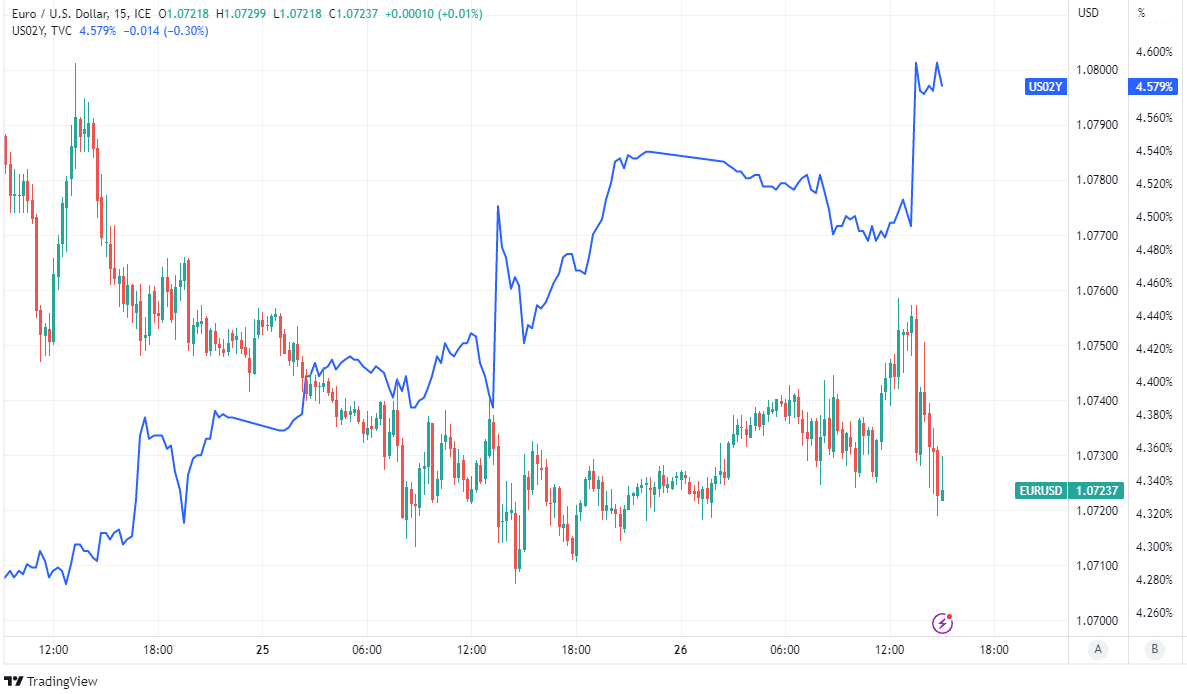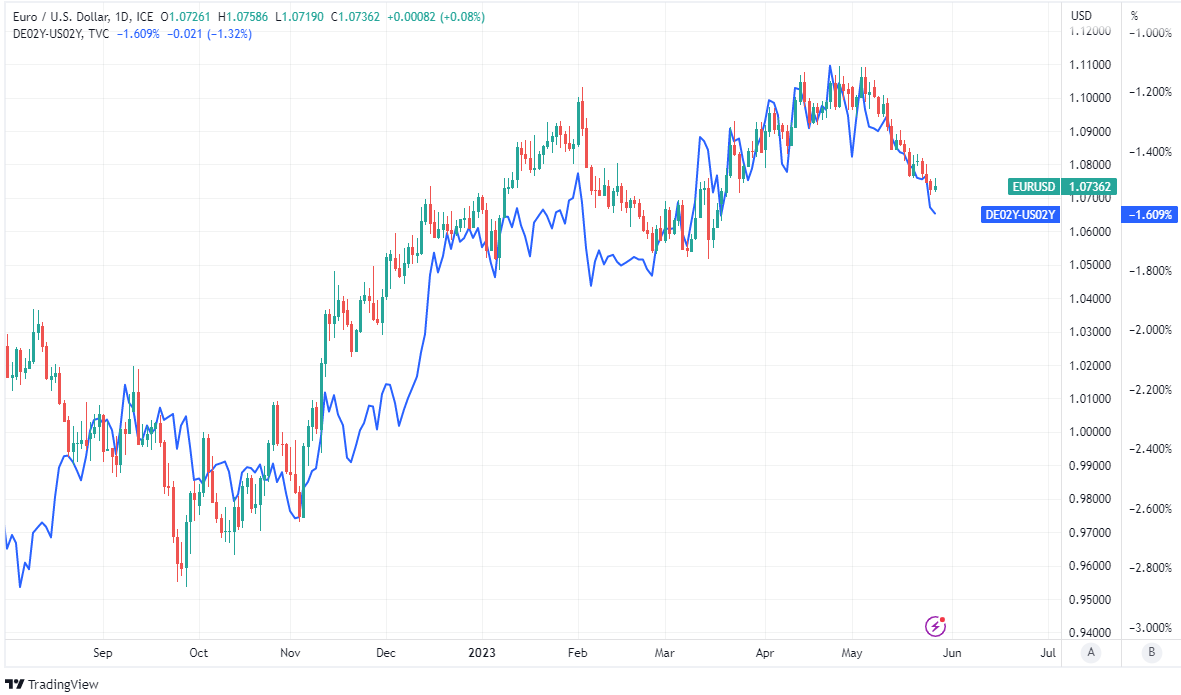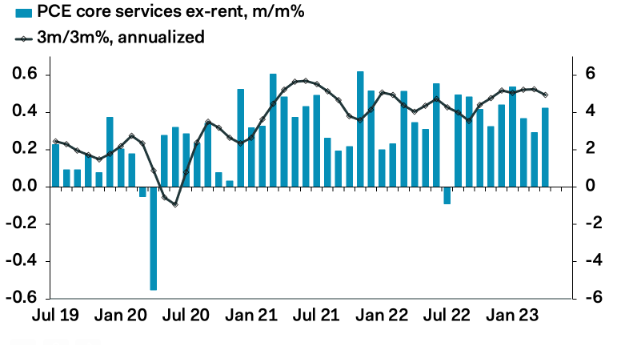PCE Inflation Accelerates, Prompts Fresh EURUSD Volatility
- Written by: James Skinner

Image © Adobe Images
The Euro to Dollar exchange rate whip-sawed in volatile trade ahead of the weekend after the preferred inflation measure of the Federal Reserve (Fed) confirmed a continued stubborn elevation of price pressures in April while also appearing to highlight robust domestic consumption.
Europe's single currency slipped briefly back toward the round number of 1.07 against the Dollar on Friday after the Bureau of Economic Analysis said personal consumption expenditures (PCE) inflation had accelerated in both monthly as well as annual terms in April.
Both the overall and core measures of the Fed's favoured inflation gauge suggested an increase in price pressures for April with each registering a 0.4% increase on the month to lift the annual pace from 4.2% to 4.4% in overall terms, and from 4.6% to 4.7% once food and energy items are set aside.
"The smaller gains core services prices in February and March mean that the increase in the three months to April, compared to the previous three months, slowed to 4.9% annualized from 5.2% in the three months to March," says Ian Shepherdson, chief economist at Pantheon Macroeconomics.
"But it remains within the range of the past two years, as the chart shows, and a definitive break to the downside remains elusive.
Source: Pantheon Macroeconomics.
The core PCE inflation rate is the most closely watched of all by Federal Open Market Committee members and climbed further above the headline rate of inflation after overtaking the latter gauge in March.
But the core PCE rate was even higher in April if prices of accommodation rentals are set aside, which is relevant because the Fed has said it would overlook these when assessing the strength of underlying price pressures as they tend to increase with interest rates, and as a result of higher interest rates.
"The rapid weakening of corporate pricing power (led by plummeting business sentiment) indicates we should expect inflation to slow sharply in the second half of the year – the problem is we aren't confident that the Fed will wait for it to happen," says James Knightley, chief international economist at ING.
"We fear that the likely result is we get over-tightening of monetary policy that, in combination with significantly tougher lending standards that will restrict the flow of credit, will tip the economy into what could be a painful recession," he adds in a review of Friday's data.
Knightley and colleagues say there is a risk of any further increase in interest rates leading to "an even greater interest rate cut story further down the line," while Pantheon's Shepherdson said the data raises the risk of a June increase but sees borrowing costs as most likely to be left unchanged.
 Above: Euro to Dollar rate shown at 15-minute intervals alongside 02-year U.S. government bond yield. Click image for closer inspection.
Above: Euro to Dollar rate shown at 15-minute intervals alongside 02-year U.S. government bond yield. Click image for closer inspection.
The same Bureau of Economic Analysis report suggested on Friday that personal consumption spending rose by a strong 0.8% in April and by 0.5% after adjusting for inflation, with just more than half of spending being directed toward goods and the remainder going to services.
"Looking ahead, the drop in the savings rate suggests that this pace of consumption isn't sustainable, with labor income gains set to slow along with hiring," says Katherine Judge, an economist at CIBC Capital Markets.
"Separately, the durable goods orders data for April provided an upside surprise in key categories that are a leading indicator of business investment in equipment. Namely, the core capital goods group (ex. defense and transportation) showed orders rebounded by a robust 1.4%," she adds.
The Fed raised its interest rate to between 5% and 5.25% earlier this month and signaled uncertainty about the outlook for borrowing costs going forward, while FOMC members have generally appeared to coalesce recently around the idea of leaving interest rates unchanged next month.
 Above: Euro to Dollar rate shown at daily intervals alongside spread or gap between 02-year German and U.S. bond yields. Click image for closer inspection.
Above: Euro to Dollar rate shown at daily intervals alongside spread or gap between 02-year German and U.S. bond yields. Click image for closer inspection.




